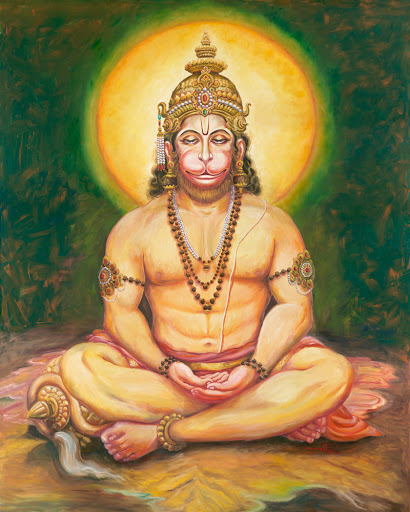I like to be by myself, when I am not well.
When people hear this, they think that I am lonely.
Actually, there is a lot of difference between being lonely and being alone.
Being lonely is the state when you miss NOT being alone.
Being alone, on the other hand, is just spending time with yourself.
And if you get bored in your own company, well, then there isn’t much to say is it:)
We come into this world alone, and we leave alone. We gather a lot during this journey – from food that sticks on to become us, to thoughts that become our personality…people who become our family, things that become our possessions…
And much like a bell curve, it reaches a peak somewhere midway, and then starts to fall away.
Some parts of it that is. We may accumulate more wealth as we grow older, but we find a lesser number of people around us, as if to balance the scale.
And so we seek company, we seek comfort, trying our best not to be lonely.
Nothing wrong in it – man is a social animal.
But sometimes, you have to learn to relish the taste of being alone.
The best ideas come to you when you are with yourself, and not in a crowd.
You hear a lot in the silence that surrounds you when you are alone – a lot becomes clearer.
You are able to focus, and understand a lot that goes on, because, your mind is a little more still.
Maybe that is how SoHum meditation was discovered.
Today, I relished being alone. And I meditated on SoHum. Here is an extract of the Day 11 of the 21-day Sādhanā – so that you can taste it too:)
A few points to note:
- Time to practice – Ideally before sunrise or during sunset. However, for beginners, early morning or late evening (before sleeping) is fine, but on an empty stomach (2 hours after eating a light meal). If possible, choose a particular time of the day, and stick to it every time.
- Place – A calm, quiet and well-ventilated place would do. You can do this in a puja room, or place of prayer. Ensure that you practice this meditation at the same place every time.
- Yoga mat – is not necessary for this practice. A rug would suffice. Not too soft though.
How you do it

- Sit in a comfortable position. Ideally in Sukhasana or Vajrasana. Avoid sitting on a chair. Keep your back straight. If you find this difficult, try the Vajrasanaposture since the back is naturally straight in this āsana. Your hands can be kept loosely on your thighs, palms facing down, or if you know how to do it, in jnana mudra. Close your eyes. Breathe normally.
- Turn your eyes slightly downward and close them gently. During meditation your eyes may move upward and downward naturally – don’t try to control this movement.
- Be aware of your natural breath flowing in and out. Breathe through your nose, keep your jaw muscles relaxed, so that your teeth are not clenched or tensed.
- Now become aware of the incoming breath, and mentally intone a long “So” that starts when you start to inhale, and continues throughout the inhalation.You do not have to pronounce it, or even curl your lips. The intonation should be silent, and in the mind, and if heard externally, would sound like “SOooooooooooooo”.
- Now become aware of the outgoing breath, and mentally intone a long “Hum” that starts as you exhale, and continues throughout the exhalation. The intonation should be silent, and in the mind, and if heard externally, would sound like “HUMmmmmmmmmmmmm”.
- As you breathe naturally, the intonations would sound (if heard externally) like SOoooooooooooHUMmmmmmmmmmSOoooooooooooHUMmmmmmmmmm…
- If the breath is short, the intonation should be short; if long, then the intonation should be long. It does not matter if the inhalations and exhalations are not of equal length. The emphasis here is on natural and spontaneous breathing, and observation.
- If you find thoughts arising, or you hear external sounds, don’t force yourself to shut them out. Be aware, and then gently bring back your attention to your breath. Think that you are waiting at a bus stop and watching a bus pass by. It may stop, but don’t board this bus. I think of my attention as a big blue ball (like the exercise ball that people sit on in lieu of a chair) – when I find my thoughts wavering – I bring the big blue ball of my attention back to the centre of my forehead.
- Don’t try to concentrate on your Ājñā chakra (third eye in the middle of the eyebrows). This meditation is for awareness, and focus on the incoming and outgoing breath.
- If you feel a lot of distraction, take a deep breath, and as you exhale, feel the tensions and distractions flowing out of your body (like the receding waters of the sea at a beach). Then, continue as before.
- Practice this meditation for 5 minutes at the beginning, moving on to 10 minutes by the end of the 21-day sādhanā.

Breathing
Gentle breathing, without strain or effort. Take in deep slow inhalations, with an expanded chest, and deep slow exhalations, with your stomach moving towards your spine. Your breathing should not be noisy – rather, should feel like the gentle waves of a calm ocean.
Awareness
Maintain awareness on the incoming and outgoing breath. If thoughts arise, be aware, but don’t participate. You do not need to focus or concentrate – just be aware.
Benefits
This meditation is a basic practice to make you aware of your natural breath. It leads to a calmer and more aware mind. As you lengthen the practice of Soham meditation, you will find yourself moving towards the true meaning of Soham – self realisation.
Things to note
The key to meditation is feeling. Without an inner feeling, sitting with your eyes closed is just a bad way to sleep.
Soham meditation comprises a) sitting with the eyes closed; b) being aware of your incoming and outgoing breath; c) mentally intoning SoHum in tune with your breath and d) listening to those mental intonations: all in a relaxed and easeful manner, without strain. As you progress, you will find yourself mentally intoning SoHum in tune with your breath throughout the day, without any additional effort or allocation of a particular time.
सोऽहम is a compound word made from सः(he) and अहम् (I). Such a simple word, but the meaning of this word is the essence of all Vedic thought. He is I – I am He.
Soham is an अजप मंत्र (Ajāpa Mantra) – a mantra that doesn’t have to be pronounced. Swami Satyananda Saraswati said, “When the name is uttered from the mouth, it is called japa; when it is uttered from the heart, it is called ajapa.” Japa also refers to conscious chanting of a mantra, and when the mantra is in sync with the breath and meditation, the mantra flows without exertion.
Some call this the greatest of all Mantras. Remove the S and the H, and you get ॐ (Om) – and so Soham is a modified version of Om, tailored for practice 21,600 times a day, without any effort from your side. We are born performing this meditation, and will die performing this mediation. If you notice carefully, “So” is the sound of the natural incoming breath, and “Hum” is the sound of the natural outgoing breath. So you practice this mediation even when sleeping!
